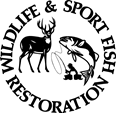Lake Naconiche 2023 Survey Report
If you have difficulty accessing the information in this document, contact the TPWD Inland Fisheries Division for assistance.
Lake Naconiche - 2023 Survey Report
Prepared by Dan Ashe
Inland Fisheries Division – Jasper District
This is the authors' summary from a 33-page report. For a copy of the complete report, use the download link in the sidebar.
Fish populations in Naconiche Reservoir were surveyed in 2023-2024 using electrofishing. Anglers were surveyed from March through May 2024 with a creel survey. Historical data are presented with the 2023-2024 data for comparison. This report summarizes the results of the surveys and contains a management plan for the reservoir based on those findings.
Reservoir Description
Naconiche Reservoir is an impoundment of Naconiche and Telesco creeks, tributaries of the Attoyac Bayou in the Neches River Basin. The lake was constructed by the County of Nacogdoches for recreation and flood control. This reservoir has a surface area of 692 acres at conservation pool (348 feet above mean sea level), a shoreline length of 22.7 miles, and an average depth of 13 feet. Access is available with a two-lane boat ramp and a lighted fishing pier. Bank access is adequate. Primary fish habitat is timber and hydrilla.
Management History
Important sport fish include Largemouth Bass and Black Crappie. The reservoir was opened to the public in September 2012 with an 18-inch minimum length limit for Largemouth Bass and changed to a 16-inch maximum length limit in 2016. Florida Largemouth Bass were stocked annually from 2011-2021, and Lone Star Bass (2nd generation offspring of pure Florida-strain ShareLunker Largemouth Bass (fish ≥ 13 pounds)) have been stocked annually from 2022-2024. Hydrilla was first observed as the reservoir began to fill in 2008 and annual vegetation surveys have been conducted since 2012. Giant salvinia was first observed in 2015. Herbicide treatments, use of a containment boom, and introduction of giant salvinia weevils have limited coverage to < 20 surface acres in 2023. PVC cube (Georgia DNR) fish attractors were added to the reservoir in 2017 at two sites (each site consists of 5 individual structures) to improve angling catch rates.
Fish Community
- Prey species: Threadfin Shad and Bluegill were the most abundant prey species and provided ample forage for sport fish. Gizzard Shad have been observed in past surveys, but none were observed during the 2023 survey.
- Catfishes: Although Channel Catfish were stocked in 2009 and 2011, only two adult fish were collected from gill net surveys in 2014 and 2016, combined. Channel Catfish abundance is low with little to no angler effort and gill net surveys have been discontinued.
- Largemouth Bass: Fall and spring electrofishing surveys reflected an abundant Largemouth Bass population over the last three survey years, however we noticed a declining trend this year. Fish condition was stable and desirable, with slightly slower growth rates observed. The Largemouth Bass fishery was most popular (95% of fishing effort), and the angler success was high.
- Crappies: The crappie fishery was the second most popular (3.2% of fishing effort). Since 2016, angler catch rate and total harvest have remained low, reflecting a small population abundance. Estimated harvest was low during the 2024 spring quarter creel survey.
Management Strategies
- Request annual stockings of Lone Star Bass to maximize trophy fish abundance.
- Manage hydrilla coverage at the boat ramp, fishing pier, and swimming area for access.
- Coordinate with lakeside homeowners to control hydrilla (at homeowner expense) adjacent to their property for access.
- Survey giant salvinia coverage at minimum annually to monitor effects of herbicide treatments and salvinia weevil releases.

Performance Report as required by Federal Aid in Sport Fish Restoration Act Texas Federal Aid Project F-221-M-6 Inland Fisheries Division Monitoring and Management Program